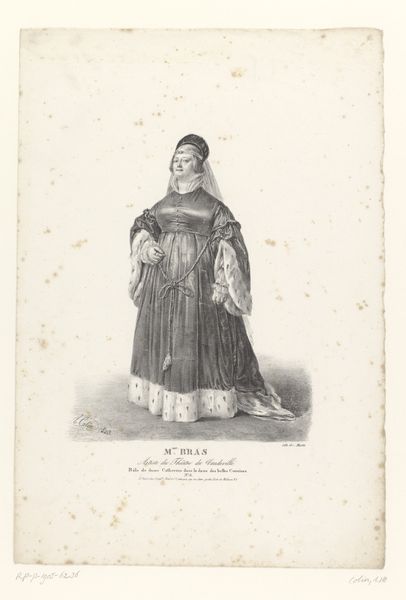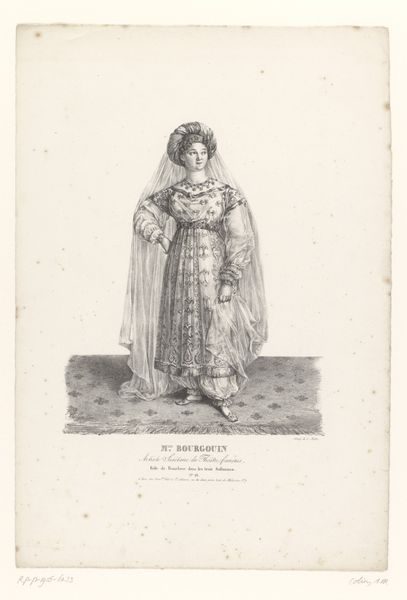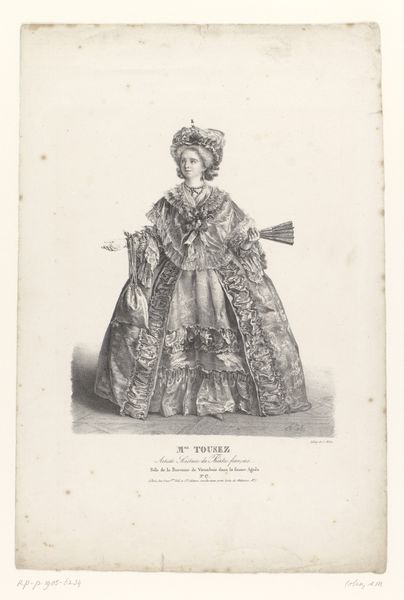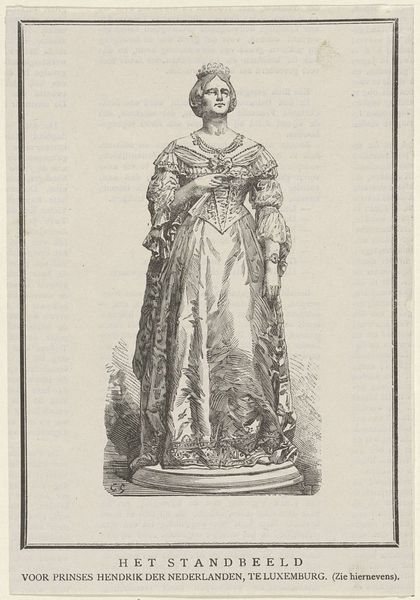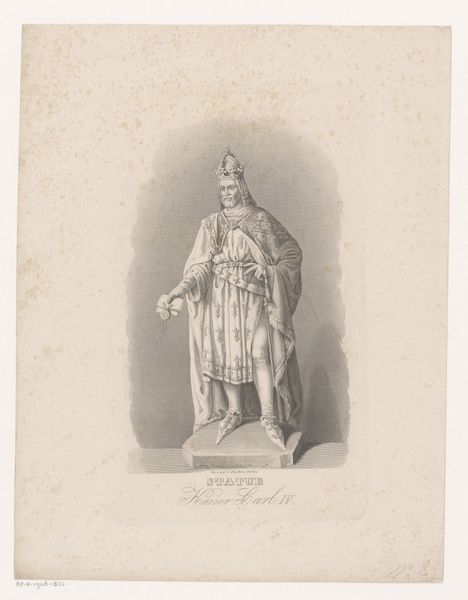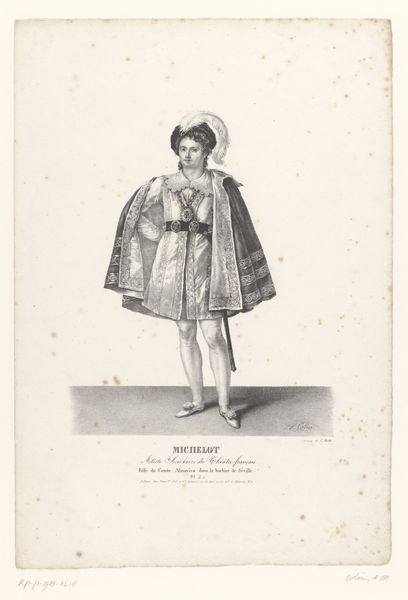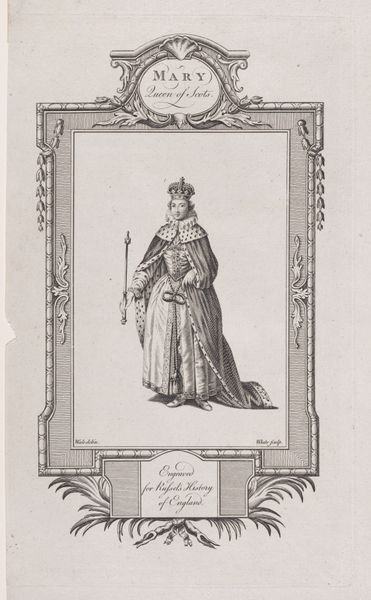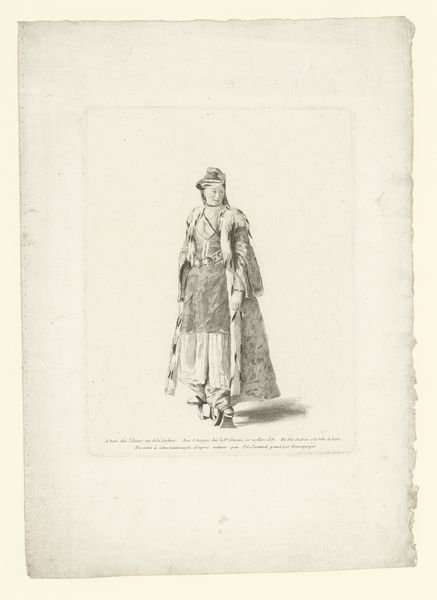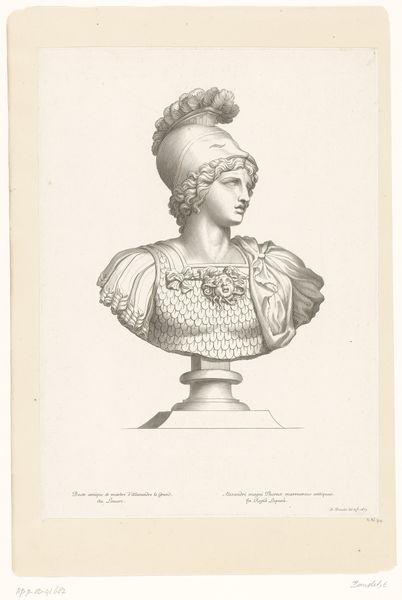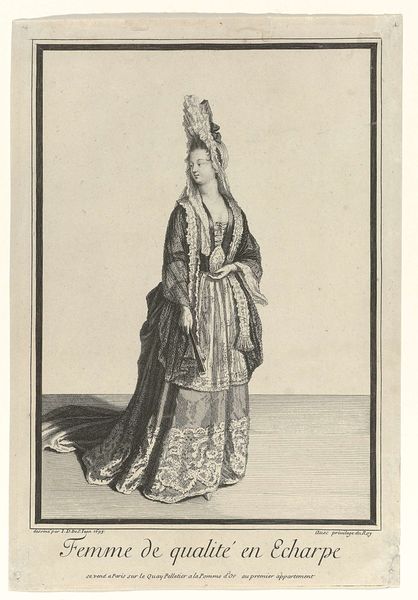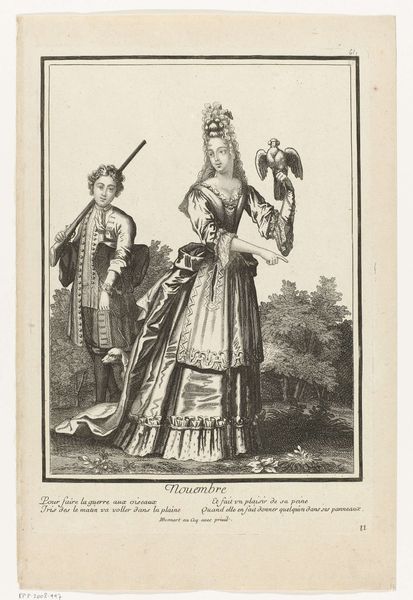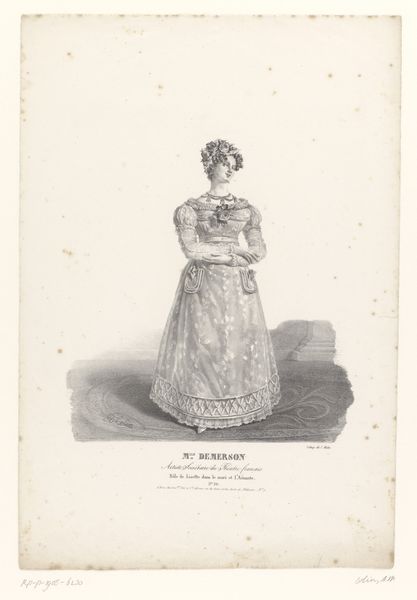
Portret van Anne Dussert als Duchesse de Mets in de vaudeville La Dame des Belles Cousines 1823
0:00
0:00
print, engraving
#
portrait
# print
#
romanticism
#
history-painting
#
engraving
Dimensions: height 422 mm, width 289 mm
Copyright: Rijks Museum: Open Domain
Editor: This print, made by Alexandre-Marie Colin in 1823, is titled "Portret van Anne Dussert als Duchesse de Mets in de vaudeville La Dame des Belles Cousines." It’s an engraving and feels very staged, almost like a promotional image. What are your initial thoughts when you see this piece? Curator: What immediately strikes me is how the image's value resides less in some inherent artistic merit and more in its reflection of social and industrial practices. The printmaking process itself - the engraving - was a form of mass production, enabling wider access to imagery and ideas about theatrical performance and celebrity culture. Editor: So you're seeing the print less as a standalone artwork and more as a record of the time, made with a very specific process? Curator: Precisely. Consider the context: 1823. We’re moving rapidly into industrial production. The image becomes a commodity, a tool for dissemination of theatrical fame. What can you say about the textile and dress that's made available via this material object? Editor: Well, it seems opulent. All that fur trimming must've taken significant labor and material resources. The image itself is probably creating desires for similar fabrics or theatrical experiences amongst its viewers, and solidifying the duchess' status... Curator: Exactly! And by extension the labor involved to produce that luxury! What you are witnessing is an interplay between representation, material consumption, and social positioning enabled through production. Consider this as a materialist window into a bygone era. Editor: That's a fascinating perspective. I wouldn’t have thought of it that way initially. Now I’m considering what role these kinds of prints had on consumer culture, and the availability of such goods in creating aspirations. Thanks for helping me look deeper. Curator: Of course! Recognizing art's role in systems of production and labor illuminates so much. This one really shows how intertwined social performance and material reality become!
Comments
No comments
Be the first to comment and join the conversation on the ultimate creative platform.
